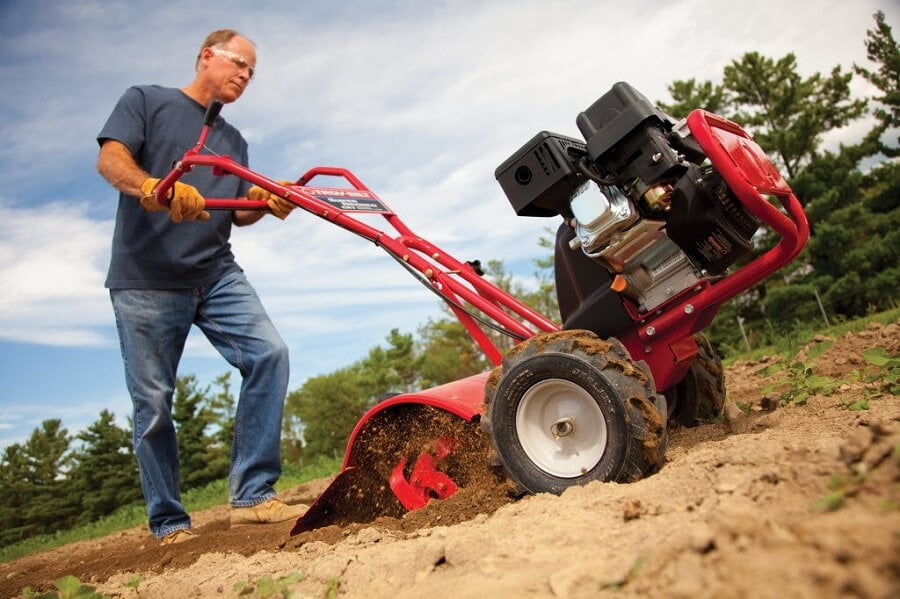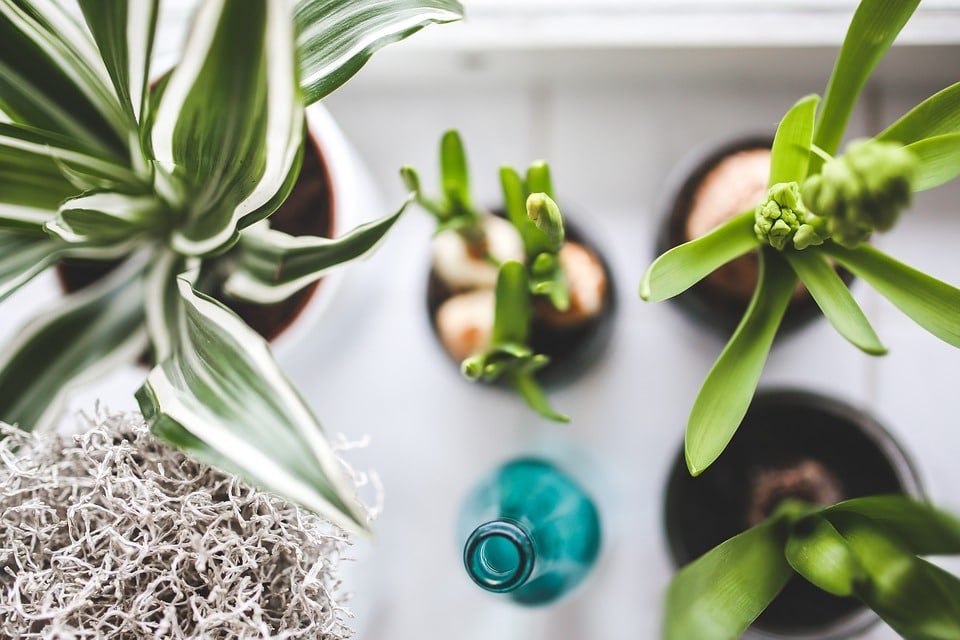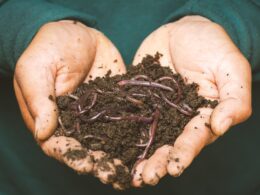Do you ever wonder how long it takes for leaves to decompose?
Knowing the timeline for leaf decomposition is essential for maintaining a safe and healthy environment, as decaying leaves can attract pests and create slippery surfaces.
Several factors can affect the decomposition process, such as moisture, temperature, and leaf thickness. On average, it takes about six months to two years for leaves to fully decompose, but this can vary depending on the conditions.
If you want to speed up the process, you can try shredding the leaves or adding nitrogen-rich materials.
Leaf composting is a popular method for managing leaf waste, and the resulting compost can be beneficial for your garden. However, it’s crucial to avoid common mistakes like using diseased leaves or failing to turn the compost regularly.
By understanding the timeline and following proper techniques, you can ensure a safe and efficient leaf decomposition process.
Quick Summary
- Leaves take 6 months to 2 years to decompose, with factors like moisture, temperature, and leaf thickness influencing the decomposition rate.
- Shredding leaves and adding nitrogen-rich materials can speed up the decomposition process.
- Leaf composting is a popular method for managing leaf waste and releasing essential nutrients back into the soil.
- Proper maintenance of the compost pile, including regular turning, moisture control, and adding nitrogen-rich materials, is important for successful leaf decomposition.
Factors Affecting Leaf Decomposition
Leaves may seem innocent, but do you know how long it takes for them to break down? Understanding the factors that influence leaf decomposition can help you ensure a safe environment.
One crucial factor affecting the decomposition rate is temperature. Higher temperatures can speed up the process, while colder temperatures slow it down. In warmer climates, leaves can decompose within a few months, but in colder regions, it may take several years.
Temperature impacts decomposition because it affects the activity of microorganisms responsible for breaking down leaves. Warmer temperatures provide an ideal environment for these microorganisms to thrive, increasing their metabolic activity and speeding up decomposition. Conversely, colder temperatures slow down the activity of these organisms, leading to a slower decomposition process.
Another factor influencing decomposition rate is the leaf’s chemical composition. Leaves with higher nitrogen content decompose faster since nitrogen promotes microbial growth. On the other hand, leaves with higher lignin content, like those from evergreen trees, decompose more slowly due to the complex structure of lignin.
Understanding the factors that influence leaf decomposition, such as temperature and chemical composition, is crucial for maintaining a safe environment. By considering these factors, you can better manage leaf decomposition and ensure a clean and healthy surrounding.
The Decomposition Process
As you watch nature’s cycle unfold, you’ll witness the remarkable transformation of fallen foliage into nutrient-rich soil. The decomposition process is a crucial part of this cycle, and it is influenced by various factors. Factors such as temperature, moisture, and the type of leaf can all influence the rate at which leaves decompose.
Microorganisms play a vital role in the decomposition process. They break down the complex organic compounds found in leaves into simpler forms, releasing essential nutrients back into the soil. Bacteria, fungi, and other microorganisms work together to break down the leaves, speeding up the decomposition process.
To give you a better understanding of the decomposition process, let’s take a look at the following table:
| Factors Influencing Decomposition Rates | Role of Microorganisms in Decomposition | Leaf Type |
|---|---|---|
| High temperature | Break down organic matter | Broadleaf |
| Adequate moisture | Release essential nutrients | Needleleaf |
| Presence of microorganisms | Accelerate decomposition process | Deciduous |
Understanding these factors can help you create a safe environment for decomposition. For example, maintaining proper moisture levels and ensuring the presence of microorganisms can help speed up the process. However, it’s important to note that decomposition rates can vary depending on the specific conditions and the type of leaf. So, as you observe nature’s cycle, remember that the decomposition process is a delicate balance influenced by many factors.
Timeline for Leaf Decomposition
When it comes to the timeline for leaf decomposition, there are three key points to consider.
First, there are fast-decomposing leaves that can break down within a few months.
Second, there are slow-decomposing leaves that can take several years to fully decompose.
Finally, there are leaves with average decomposition times, which typically fall somewhere in between the fast and slow-decomposing categories.
Fast-Decomposing Leaves
You’ll be amazed at how quickly these leaves break down into nutrient-rich soil. Fast-decomposing leaves can significantly accelerate the decomposition process, providing you with a safe and efficient way to enrich your garden.
When these leaves are left on the ground, they begin to decompose within weeks, thanks to their high nitrogen content and thin structure. The warm and moist conditions during spring and summer further speed up the process.
As the leaves break down, they release essential nutrients like carbon, potassium, and phosphorus, which are vital for plant growth. This natural decomposition process not only saves you time and effort but also reduces the need for chemical fertilizers.
So, if you’re looking for a safe and effective way to nourish your plants, fast-decomposing leaves are your best bet.
Slow-Decomposing Leaves
Contrary to their fast-decomposing counterparts, slow-decomposing leaves offer a gradual and enduring process of enriching your garden with essential nutrients.
These leaves may take longer to break down, but they provide several benefits that make them worth the wait. First and foremost, slow decomposing leaves act as a natural mulch, protecting your soil from erosion and temperature fluctuations. This helps maintain a stable environment for your plants to thrive.
Additionally, the gradual decomposition process releases nutrients slowly over time, ensuring a steady supply of nourishment for your garden. This can improve the overall health and vitality of your plants, leading to stronger root systems and increased resistance to diseases and pests.
So, embrace the patience and reap the rewards of slow-decomposing leaves in your garden.
Average Decomposition Times
Embrace the magic of nature’s clock and witness leaves slowly transforming into rich nourishment for your garden. As you patiently wait, factors such as leaf type, moisture levels, and temperature influence the decomposition process.
Broad leaves, like oak or maple, take around one to three years to fully break down, while narrow leaves, such as pine or fir, can decompose within a few months. To speed up the process, ensure adequate moisture levels and a temperature between 55-90°F. However, it’s important to note that leaf decomposition has a minimal environmental impact. In fact, it contributes to the natural recycling of nutrients and enhances soil fertility.
So, sit back and appreciate the wonders of nature as your garden benefits from the slow and steady transformation of leaves.
Tips for Speeding Up Leaf Decomposition
Speeding up leaf decomposition can be easily achieved with a few simple tricks. If you want to quickly turn your leaves into nutrient-rich compost, follow these tips for leaf mulching. First, shred your leaves into smaller pieces before adding them to your compost pile. This will help speed up the decomposition process by increasing the surface area for microbes to break down the leaves. Secondly, mix in some nitrogen-rich materials, such as grass clippings or kitchen scraps, to provide a food source for the decomposers. This will help them work more efficiently and break down the leaves faster. Lastly, make sure your compost pile is well aerated. Turning the pile regularly or using a compost tumbler will help introduce oxygen and prevent the pile from becoming compacted.
By following these tips, you can speed up the decomposition of your leaves and enjoy the benefits of leaf composting. Leaf mulching not only helps to reduce waste and save landfill space, but it also enriches your soil with valuable nutrients. The compost created from decomposed leaves can improve soil structure, retain moisture, and promote healthy plant growth. So, why wait? Start implementing these tricks today and witness the magic of accelerated leaf decomposition in your own backyard.
Is the Decomposition Process the Same for Grass Clippings and Leaves?
Is the grass clippings decomposition time similar to that of leaves? While both grass clippings and leaves undergo decomposition, the rate at which they break down may vary. Factors such as moisture, temperature, and carbon-to-nitrogen ratio influence the decomposing time. Therefore, it is important to consider the specific conditions for each type of organic matter.
Leaf Composting Methods
If you want to speed up the decomposition of leaves in your backyard, there are three effective methods you can try.
First, backyard composting involves creating a compost pile or bin where you can mix leaves with other organic materials like kitchen scraps and grass clippings.
Second, leaf mold composting is a method that allows leaves to break down naturally over time, creating a nutrient-rich soil amendment.
Lastly, vermicomposting with leaves involves using worms to accelerate the decomposition process and produce high-quality compost.
Backyard Composting
Transform your backyard into a composting oasis and witness the astonishingly quick decomposition of leaves. Backyard composting is a safe and effective way to turn your yard waste into nutrient-rich soil. By following proper leaf pile maintenance, you can create a thriving composting system that will quickly break down leaves and other organic materials. Here is a handy table to guide you in backyard composting:
| Leaf Pile Maintenance | Frequency | Safety Tips |
|---|---|---|
| Turning the pile | Every 2-3 weeks | Wear gloves and avoid inhaling dust |
| Adding moisture | As needed | Use a hose to moisten the pile |
| Checking temperature | Weekly | Avoid touching the pile with bare hands |
| Adding nitrogen-rich materials | Regularly | Avoid adding meat or dairy products to prevent pests |
By properly maintaining your leaf pile, you can speed up the decomposition process and ensure a safe and effective composting experience. Happy composting!
Leaf Mold Composting
Create a leaf mold compost pile in your backyard and watch as nature works its magic, turning fallen leaves into a nutrient-rich soil amendment that’ll nourish your plants and make your garden thrive.
Here are three reasons why leaf mold composting is beneficial and safe for your backyard:
-
Natural Weed Suppression: Leaf mold acts as a natural weed suppressant, preventing unwanted plants from taking over your garden. By using leaf mold, you can reduce the need for harmful chemical herbicides.
-
Moisture Retention: Leaf mold helps retain moisture in the soil, reducing the need for frequent watering. This not only saves water but also prevents soil erosion and supports the growth of healthy plants.
-
Nutrient Boost: Leaf mold is packed with essential nutrients that plants need to thrive. By adding leaf mold to your soil, you’re enriching it with organic matter, promoting better plant growth and overall garden health.
By incorporating leaf mold composting into your backyard routine, you can enjoy a beautiful and safe garden while also reducing your environmental impact.
Vermicomposting with Leaves
Vermicomposting with leaves is an easy and enjoyable way to turn kitchen scraps into nutrient-rich compost for your garden. It not only reduces waste but also provides numerous benefits for your plants.
Vermicomposting involves using worms to break down organic matter, such as leaves, into a rich and dark soil amendment. The process is safe and can be done indoors or outdoors, depending on your preference.
To start, gather your kitchen scraps and mix them with shredded leaves. Place the mixture in a vermicomposting bin and add red worms. Make sure to keep the bin moist and provide a bedding material, like shredded newspaper.
The worms will eat the organic matter and produce nutrient-rich castings, which you can use to fertilize your plants. Vermicomposting with leaves is a simple and effective way to create compost while benefiting your garden.
Using Decomposed Leaves in Gardening
If you’re looking to improve your garden, there are several ways you can make use of decomposed leaves. One option is to mulch with leaf compost, which can help retain moisture and suppress weeds.
Another option is to make a leaf-based potting mix, which can provide nutrients and improve soil structure.
Lastly, you can add leaf compost directly to your soil, enhancing its fertility and promoting healthy plant growth.
Mulching with Leaf Compost
Mulching with leaf compost adds nutrients to your soil, helping your plants thrive and creating a vibrant, lush garden. It’s a great way to give your plants the nourishment they need while also being safe for you and your family.
Using leaf compost as mulch has many benefits. First, it improves soil structure, allowing for better water retention and reducing erosion. Second, it suppresses weed growth, saving you time and effort in maintaining your garden. Third, it regulates soil temperature, protecting your plants from extreme heat or cold. Lastly, it acts as a natural insect repellent, keeping harmful pests away from your garden.
Compared to other mulching materials, such as wood chips or straw, leaf compost is an eco-friendly and cost-effective alternative. So go ahead and mulch with leaf compost to create a beautiful and healthy garden while keeping safety in mind.
Making Leaf-Based Potting Mix
To create a nutrient-rich potting mix for your plants, you can easily make use of those vibrant fall leaves in your yard. Not only will this save you money, but it’s also an eco-friendly option.
First, gather the leaves and shred them into small pieces. This’ll help with decomposition and make it easier to mix with other ingredients.
Next, combine the shredded leaves with equal parts of compost and sand to create a well-balanced potting mix. This’ll provide the necessary nutrients and drainage for your plants to thrive.
Remember to wear gloves and a mask when handling the leaves to protect yourself from any potential allergens or irritants.
Once you have your leaf-based potting mix ready, you can use it for various leaf-based crafts or art projects. Get creative and let your imagination run wild!
Adding Leaf Compost to Soil
Once you’ve gathered the shredded leaves, you can enhance the quality and fertility of your soil by adding leaf compost. This simple step will significantly improve your garden’s soil enrichment and contribute to successful organic gardening.
Adding leaf compost to your soil provides essential nutrients and promotes healthy plant growth. The decomposed leaves act as a natural fertilizer, enriching the soil with organic matter. This helps improve soil structure, water retention, and nutrient availability for your plants.
To incorporate the leaf compost, spread a layer of it evenly over your garden bed or mix it thoroughly into the soil. The compost will slowly release nutrients, providing long-term benefits for your plants.
By enriching your soil with leaf compost, you ensure a safe and sustainable way of gardening, without relying on synthetic fertilizers.
Common Mistakes to Avoid in Leaf Decomposition
When it comes to leaf decomposition, there are a few common mistakes you should avoid. First, make sure to avoid adding invasive or diseased leaves to your compost pile, as this can spread unwanted pests or diseases.
Secondly, don’t neglect moisture levels, as leaves need a certain amount of moisture to break down properly.
Lastly, don’t ignore proper aeration, as turning the pile regularly helps to promote decomposition.
Adding Invasive or Diseased Leaves
Adding invasive or diseased leaves to the decomposition process can significantly impact the rate at which the leaves break down. It’s crucial to be cautious and avoid introducing invasive species or diseased leaves into your compost pile or garden.
Invasive species can quickly spread and take over native plants, causing harm to the local ecosystem. Disease-infected leaves can also spread pathogens and infect other plants, leading to widespread damage.
To prevent these issues, it’s essential to properly identify and remove any invasive or diseased leaves before adding them to the decomposition process. Additionally, practicing good hygiene, such as cleaning garden tools and maintaining a healthy garden environment, can help prevent the spread of diseases.
By being mindful of the leaves you add, you can ensure a safe and efficient decomposition process.
Neglecting Moisture Levels
To ensure optimal decomposition, you must maintain the proper moisture levels in your compost pile or garden. If you neglect the moisture levels, it can significantly slow down the leaf decomposition rate and impact the overall health of your compost. Here are a few important points to keep in mind:
-
Adequate moisture: Leaves need moisture to break down effectively. Aim for a moisture content of around 50-60% in your compost pile.
-
Avoid overwatering: While moisture is crucial, excessive water can lead to anaerobic conditions and unpleasant odors. Find the right balance.
-
Monitor temperature: Temperature plays a vital role in decomposition. Keep your compost pile between 110-160 degrees Fahrenheit to speed up the process.
-
Turn the pile: Regularly turning the compost pile helps distribute moisture evenly and promotes aeration, aiding in decomposition.
By maintaining the proper moisture levels and temperature, you can ensure that your leaves decompose efficiently, creating rich, nutrient-filled compost for your garden.
Ignoring Proper Aeration
Neglecting proper aeration in your compost pile can suffocate the decomposition process, leaving your leaves stagnant and preventing the creation of nutrient-rich compost for your garden. When oxygen cannot reach the decomposing leaves, harmful anaerobic bacteria take over, causing unpleasant odors and potential safety hazards. To avoid these leaf decomposition problems, it is crucial to ensure proper aeration in your compost pile. This can be achieved by turning the pile regularly, using a pitchfork or compost aerator, to introduce fresh air and break up compacted materials. Additionally, layering your leaves with other compostable materials like grass clippings or kitchen scraps can enhance airflow and facilitate decomposition. By following these leaf decomposition techniques, you can create a safe and effective compost pile that will transform your leaves into nutrient-rich compost for your garden.
| Leaf Decomposition Problems | Leaf Decomposition Techniques |
|---|---|
| Unpleasant odors | Regularly turn the pile |
| Safety hazards | Use a pitchfork or aerator |
| Anaerobic bacteria | Layer with other materials |
| Stagnant decomposition | Incorporate grass clippings |
Frequently Asked Questions
Can I use leaves from different types of trees for composting or should I stick to one type?
Yes, you can use leaves from different types of trees for composting. The pros are increased nutrient diversity and improved soil quality. The cons are slower decomposition and potential imbalance in carbon-to-nitrogen ratio.
What are some common signs that leaves in my compost pile are decomposing properly?
To ensure proper leaf decomposition in your compost pile, look for signs such as a dark, crumbly texture, earthy smell, and absence of recognizable leaves. If you encounter issues, troubleshoot by adjusting moisture, turning the pile, or adding nitrogen-rich materials.
Are there any specific weather conditions that can speed up or slow down the leaf decomposition process?
Weather conditions can impact the speed of leaf decomposition. Higher temperatures can accelerate the process, while colder temperatures can slow it down. It’s important to consider temperature when composting leaves to ensure proper decomposition.
Can I use leaves that have been treated with pesticides or herbicides for composting?
Using leaves treated with pesticides or herbicides for composting is not recommended for safety reasons. It may harm plants, animals, and the environment. Instead, consider using untreated leaves or other organic materials for composting.
How long does it take for leaves to decompose in a compost bin compared to in a leaf pile in my yard?
In a compost bin, leaves generally decompose faster than in a yard leaf pile due to increased heat and microbial activity. Different tree types may affect composting efficiency, but avoid using leaves treated with pesticides or herbicides for safety reasons.
Conclusion
So there you have it! Now you know how long it takes for leaves to decompose. The timeline can vary depending on various factors, such as the type of leaves, moisture levels, and temperature. If you’re looking to speed up the decomposition process, try shredding the leaves and creating a compost pile. Once the leaves have fully decomposed, you can use the nutrient-rich compost in your garden. Just be sure to avoid common mistakes, such as adding too much moisture or not turning the pile regularly. Happy composting!









